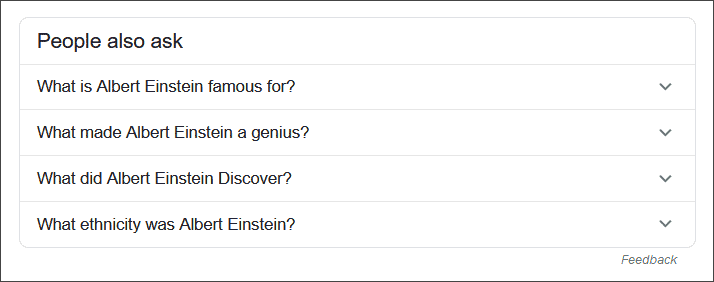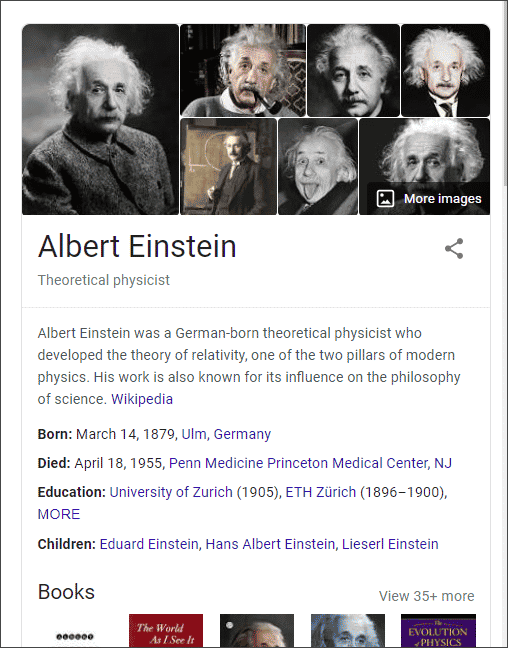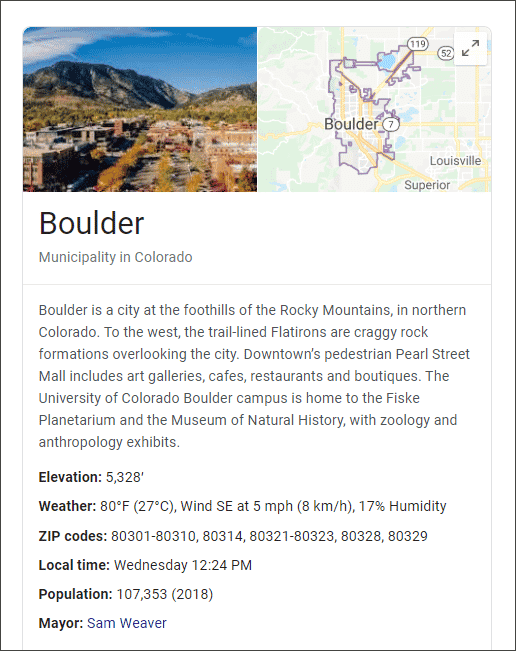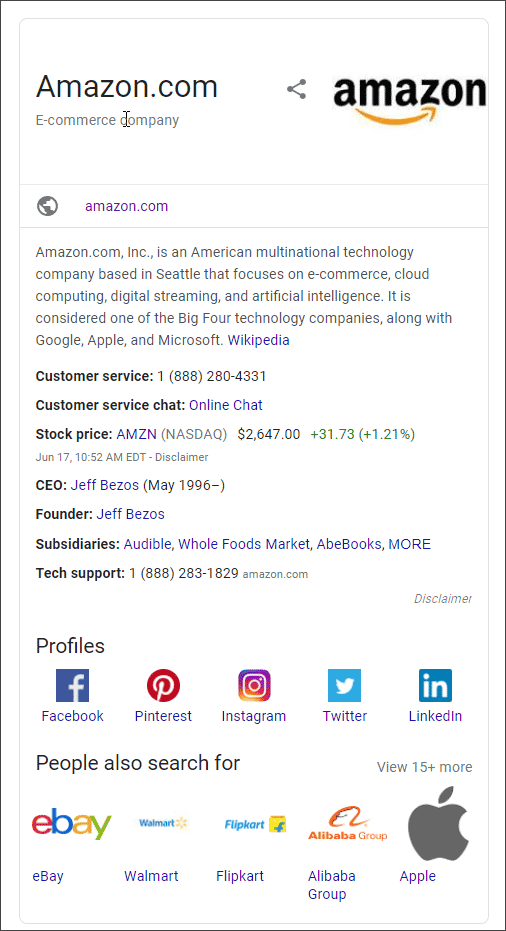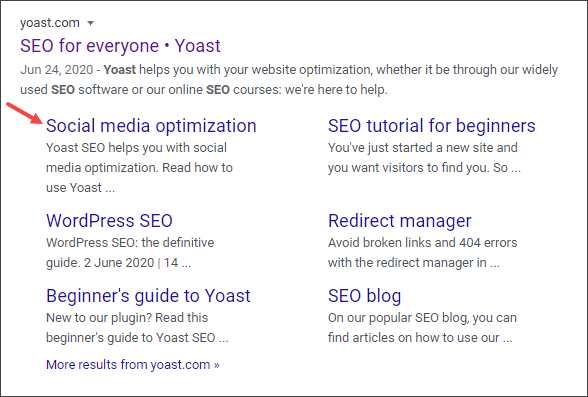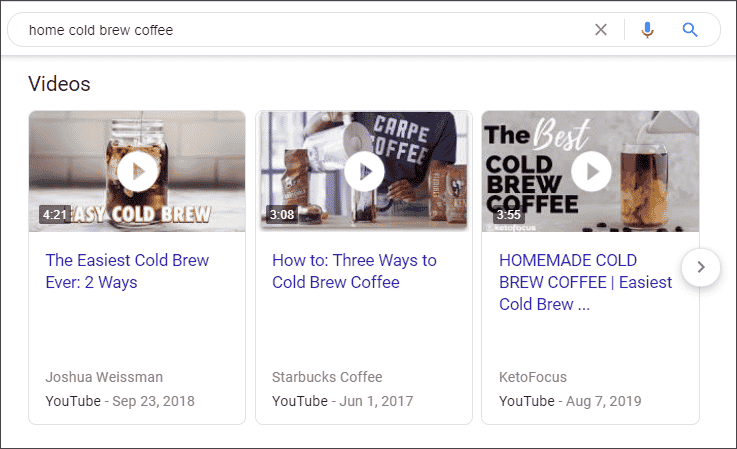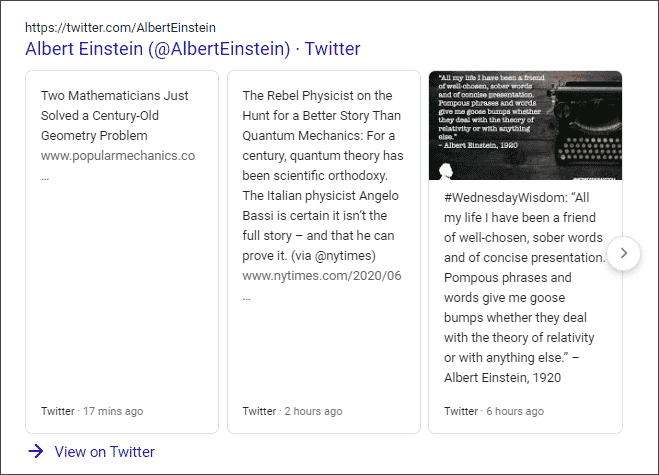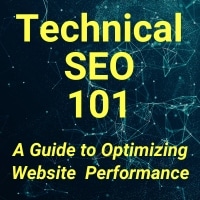A common question about Google search results is “Why do Google search results look different” even when using the same exact search words or phrase?” Even when using the same computer, phone, or tablet?
Many users, especially those not well-versed in Google’s mysterious and ever-changing search algorithm, may attribute this to simple error. However, these changes are actually quite intentional.
Why Do Google Search Results Change?
Sounds like a simple question, but it’s not. The short answer is, it depends. The broader answer requires a look at the specific keyword search phrase, how the search is done, the location where the search is done, the type of device that is used (desktop, tablet, phone), and the continuing evolution of Google’s Search Engine.
Understanding How Google Search Results Vary
There are many different elements that determine what Google displays for a given search term. To understand how Google’s efforts change your search results we’ll first look at the standard items involved in determining results. Then we’ll examine the other elements that Google may insert into Search Engine Results Pages (SERPs).
It is also important to remember that how Google displays different elements can also vary depending on the device being used.
The results displayed on desktop and laptop computer will be different than phones and tablets.
Here are 9 factors that can play a role in the results Google returns for your searches and what is displayed in the SERPs.
Click on each factor to jump to the section.
-
Previous Google Searches On a Single Device
-
Previously Clicked Links
-
Your Geographic Location
-
Google Account In Use
-
Device Used in Google Search
-
Type of Google Search and Filters Used
-
Paid Ads Present on Search Results Page
-
Changes to a website or its content
-
Other Informational Elements on Search Results Page
1. Previous Google Searches On a Single Device
Do you remember everything you’ve searched for with Google in the past? Probably not, but Google does, or at least up until the last point you cleared your browser cache and cookies.
If you regularly search for similar keywords, Google will remember this, offering you results based on prior searches.
This can be especially misleading for businesses used to searching their own company name or specific keywords on a regular basis. Repeated searches for a given keyword phrase may make a given company or webpage seem particularly favored in the results pages and slowly move higher in the results that a given search returns.
One way to check on this variation is to use a different browser (Firefox, Safari, Chrome, Edge) and search for the same exact keyword phrase. Results may be the same, or they may differ slightly or even significantly.
2. Previously Clicked Google Links
If you’ve searched Google using the same keywords and phrases, and repeatedly clicked on specific links from the results Google returned your results will change over time. Pages that you visited from the links in the results Google returned will start to show up more and more in your results. They will frequently move higher on the page, potentially creating a false impression that a website page is ranked higher than it actually is.
Want to try it for yourself? Google a phrase, then select a link on page 2. Repeat the action a few times. You may be surprised how quickly that link will make its way up the rankings on your specific computer, tablet or smartphone. However, this will only be true for your searches, on your computer or smartphone, using the same web browser.
Related Post: “Why High-Quality Website Content Is A Key Business Asset”
3. Your Geographic Location
Google relies heavily on location services, meaning that your search results will generally reflect the location settings on the device you are using. If you search “plumber,” the first listing returned will likely be a plumber close to you.
This can be a benefit for local businesses who are only seeking customers in close proximity, but can stymie national firms working to achieve broader visibility.
The next time you go on vacation or travel out of town give it a shot. Perform a Google search for the keywords you usually use to reach your company’s page or other common searches that you do and see how much the results change from what you normally see. The farther you travel the more pronounced the differences are likely to be.
4. Google Account Use
Millions of people have Google accounts, using them to access Gmail, Google Drive, Google Voice, and dozens of other related services. A Google account can be used simultaneously on multiple devices, creating a large web of user data that Google can collect and use to refine search parameters for a given Google account.
If you are logged into your Google account while doing a search on Google this store of data will be used by Google to help refine your search based on past behavior. If you want to experiment for yourself, search for something common that you research frequently, and then log out of your account and search again. In many instances your Google search results will vary.
5. The Device Used For Google Search
Google changes its algorithms hundreds of times over the course of a year, but only few are significant enough to warrant warning. Google Panda was one such change, in which mobile rankings were altered to put responsive and other mobile web design strategies higher than sites with only desktop pages.
This change mainly effected how website performed on mobile devices such as tablets and smartphones. If you have a great website without a mobile alternative or a responsive design, your Google ranking will more than likely vary from device to device, and often not in your favor on mobile devices.
6. The Type of Google Search You Perform
As is to be expected, what you’re searching for will have a big effect on what results you end up with. If your keywords include products that are commonly shopped for online, your results may include more shopping links and results for e-commerce pages.
For searchers looking to locate specific websites, web pages, resources or content the filters located directly below the search box can be useful. They allow filtering by Shopping, Images, Videos, News, Maps, Books, Flights and Finance.
A favorite search filter is the Time setting under the Tools button. This will allow you to filter by Past hours, Past 24 hours, Past week/month/year. Or create a custom time search range. A good way to avoid outdated content.
7. Google Paid Ads Present on Search Results Page
It’s no secret that Google places ads on its Search Engine Results Pages (SERPs). Some text-based ads are at the top of the first results page, while some show up off to the right-hand side. Sometime there are ads at the end of the ten blue links.
Product searches on Google may also trigger Google Shopping Ads or Product Listing Ads (PLAs) to display in the SERPs.
These ads will display relevant products from paid advertisers. Shopping or product listing ads will include a photo of the product, the retailer name, and the price. Some listings may also include a star rating or a feature like free shipping.
These can dramatically change the appearance of the results you see, especially if any of the factors mentioned previously are also at play. A search for a keyword phrase on a home tablet may look very different on an office desktop computer or on a smartphone as the number and the position of ads will change.
8. Changes to a Website or its Pages
Websites and webpages change over times. Some website change frequently. These changes can impact SEO and how a given page is present in the SERPs for a given search phrase. In other words Google can lower the ranking position for a web page and it will no longer show up in the search results for a given search phrase.
Conversely new web pages may come along and rank higher for the given search phrase and drive other pages off the first page (or first few pages) of the search engine results. Newer, more recent content can impact older and perhaps dated content. Especially in videos, images and news.
9. Other Informational Elements
In addition to the standard listing of search results (10 blue organic links + ads + “Searches related to…”) Google has also added a number of other elements to the search results page. These can include blocks for People Also Ask, Knowledge Panels, Knowledge Graphs, Sitelinks, Rich Snippets, Local Packs, Product Carousels, and Popular Products
The display or absence of these elements will vary by type of search and search phrase being used.
For instance searching for a product (iPhone case) compared to location (Denver, CO), compared to a person (Albert Einstein) can significantly change what elements appear on the search results page.
The order and appearance of these elements can also vary. They will look different on a desktop or laptop computer compared to a mobile device (phone, tablet).
Additionally, website uptime or downtime can also effect what Google displays in the search engine results. When a website is offline or “down” it frequently will not show up in search results. An important reason to monitor your site.
Related Post: “Technical SEO 101: Your Guide to Better Website Performance”
Other Informational Google SERP Elements Explained
People Also Ask
This is a very common added element that contains 3-4 relevant questions directly related to the search phrase. The related questions are focused on helping users explore a topic further. Each question can be expanded using the small drop arrow on the right.
The questions are generated by Google and are frequently follow-up questions to the original search query.
The image below shows a People Also Ask box that appears from a search for Albert Einstein displaying additional questions related to the search query. The following image shows an example of the People Also Asked box that appears when the drop down link (arrowhead) has been clicked.
Example with a drop down link (arrowhead) has been clicked.
Knowledge Panels & Knowledge Graph
Knowledge Panels for provide information as a quick snapshot of a topic and resources related to that topic. The Knowledge Panel appears to the right of the search results on a SERP.
This element is another form of rich content that Google includes in search query results.
It displays information pulled from Google’s Knowledge Graph including data on people, organizations, businesses, places and things and how they are connected.
This Information is pulled from publicly available sources including company websites, business directories, Wikipedia, Google Maps and Google My Business listings.
There are various styles of Knowledge Panels and the content included will vary depending on the entity being displayed. For instance the content elements for the Knowledge Panel of a corporation will be different from a local business or a brand or a person or a movie.
The 3 images below shows a the Knowledge Panel that appears from a search queries for Albert Einstein, Boulder CO, and Amazon.com
Sitelinks
These are a Google SERP Feature that shows a website’s main (home) page as well as links to other top content on the website. These are a common way Google search results vary.
For websites that display this type of content the expanded results will include several targeted links.
These links are to the most popular pages of that website from Google’s view. The exact number of sitelinks may vary from two, four, or six and are displayed directly underneath the website home page link.
According to Google – “The links shown below some of Google’s search results, called sitelinks, are meant to help users navigate your site. Our systems analyze the link structure of your site to find shortcuts that will save users time and allow them to quickly find the information they’re looking for.”
The image below shows that appears from a search query for Yoast.com
Rich Snippets
These are text-based search results with additional information displayed. The enhanced results are more visual and can make a listing stand out on the SERP. The added information can include an expanded amount of text in description, images, product ratings (think stars), number of reviews, and product price.
There are dozens of Rich Snippet types (also known as Rich Results). The content is specific to the type of website referenced. The most common source for the information found in Rich Snippets is the Structured Data found within a web page’s HTML coding.
Google provides a method of testing a web page to see which rich search results can be generated from the structure data within the page here: Google Rich Results Test – https://search.google.com/test/rich-results
The image below shows an example of Rich Snippets that appears from a search queries for “home made ice cream” and ”product photography services.”
Google Search Results Vary In The Local Pack
This SERP feature originates from a search query for products or services that can be provided by local businesses. The local pack consists of three local business listings, a small map of the relevant area showing the locations of the three businesses and a “More places” link for additional results.
Each business listing in the Local Pack will include an address, store hours, a Google reviews summary, links to the business’s website and driving directions. In some listings a simple thumbnail image may take the place of the website and directions links. Clicking this image takes you to a Knowledge Panel for the given business with more details and links.
Clicking the More Places link at the bottom of the Local Pack will take you to Google’s local finder to view more local businesses than are shown in the local pack.
The listings shown Local Packs are selected from businesses in the Google My Business directory. Improving your business listing in Google My Business Directory may improve your ranking in the Local Pack. This SERP feature will only show up for businesses with brick-and-mortar locations. Local Pack visibility is not available for online-only businesses.
The image below shows a Local Pack that appears from a search query for two different coffee searches that illustrate different types of results.
Searches Related To…
For most Google search queries there will be a list of additional links labelled “Searches Related to…” at the bottom of the page. These will link to additional queries for related topics. When viewing a search query for “Albert Einstein” the Searches related to Albert Einstein might contain a link to a new search query for “Albert Einstein quotes”. Below is an example.
Carousels
This Google search feature can be used for displaying different types of content. A carousel is essentially a horizontal display of items in square blocks that relate to the search query. The blocks generally include some form of thumbnail image and can also include text information.
Google search carousels can be used to display images, videos, news links, tweets, ads and popular products. They can appear at the top of the search results or within the search results. Some elements such as reviews & videos can be impacted by recency with older items dropping off over time.
Popular Products
Google added a Popular Products carousel SERPs in early 2020 for category and product-related searches. The section highlights various products including a photo of the product, and a price. Some listings may also include a star rating. And the number of reviews.
Clicking on a product will take you to a new search specifically for the product. The new search will include a Knowledge Panel with additional details. The Popular Products section was originally launched for mobile only and a narrow set of categories, but has now expanded to all devices and a broader set of product categories.
The image below shows a Popular Products Carousel that appears from a search query for home cold brew coffee.
Video Pack
A carousel of videos will sometimes display within the SERPs depending the search phrase used and relevant available videos. Yet another reason Google search results vary. The thumbnails for the videos displayed will be for three or more YouTube videos. Users can scroll right to view more related videos.
These video carousels are different from what would be shown if the search was done using the Video Search filter located in the Filter Bar directly below the search box. Important to recognize the difference.
The image below shows a Videos Carousel that appears from a search query for homemade cold brew coffee.
Image Pack
A carousel of images will sometimes display within the SERPs depending on the search phrase used and the relevant available images. The thumbnails for the images displayed will be for three or more mages. Users can scroll right to view more related videos.
Occasionally more than one row of images will be displayed. These Images carousels are different from what would be shown if the search was done using the Image Search filter located in the Filter Bar directly below the search box. Important to recognize the difference.
The images below show Image Carousels that appears from a search query for coffee grinders and Babe Ruth.
News Items
Another reason Google search results vary is that Google may also include a carousel of three or more news items in the results. Also labeled as Top Stories, this type of content may include both links to relevant articles or videos. Results mainly occur for people, companies or popular topics.
Information for new items included in the SERPs is drawn from Google News which is Google’s computer-generated news site that aggregates headlines from news sources worldwide. Google News is also and app as well as a specific filter in Google located in the Filter Bar directly below the search box.
The image below shows a Top Stories News Carousel that appears from a search query for Bill Gates.
Tweets
On some searches that include a popular person, entity or business the SERP may display a tweet carousel of the three most recent tweets from an official Twitter account associated with the query. What is shown is largely dependent on how frequently the given entity from its own Twitter account
Sometime tweets from multiple accounts can show in the tweet carousel. The thumbnails displayed will be for three or more tweets. Users can scroll right to view more related tweets.
The image below shows am Image Carousel that appears from a search query for Albert Einstein.
Related: “Keywords, Search Terms and Keyword Phrases – Essential Everywhere Online”
Business Keyword Rank Checking:
Google search results vary. Checking the rankings for a given keyword phrase for your business is not as easy as it seems. The factors described above impact the results Google returns for a given search.
With so many factors making up Google’s algorithm, how is it possible to know where a given website or web page actually ranks for a specific keyword phrase?
- Keeping in mind that rankings can shift many times a day naturally, there are ways to get a more objective view of where a website ranks for a given keyword phrase.
- One way to take a fresh look at the rankings for a keyword phrase is to clear your browser cache, cookies, and history, turn off location data, make sure that you are logged out of any Google account.
- After all this cleanup re-run the Google search.
- Another way to do this is to use a completely different browser. In this new browser (Firefox, Google Chrome, Microsoft Edge, Apple Safari) be sure not to log in to a Google account and don’t click on any links that are returned in the SERPs.
- This will make it easier to see where or if a website or web page ranks for a keyword phrase while avoiding any actions that might artificially inflate the rankings for the keyword.
- A third method is to use a browser’s “private” searching mode. Most browsers provides an “In Private” mode and Google’s Chrome browser provides an “Incognito” mode. These modes must be selected when you launch the browser.
- There are also a number of SEO tools and services that provide regularly updated information on search rankings for specific keyword phrases. These include SEMRush, Moz Pro, Advanced Web Rankings, aHrefs and Google’s Search Console.
- Costs and functionality can vary based on the given service provider and the number of keywords you want to explore and track.
Conclusions & Takeaways:
Google search is a powerful Internet tool. It offers a sophisticated method for locating, gathering and consolidating a wide range of data from anywhere on the Internet.
While providing a quick response for a wide range of data types and time frames it is not unusual for to see Google search results vary. Even on the same device, using the same search term.
The Google search engine has evolved dramatically over the last 20+ years. It’s no longer just a collection of Ten Blue Links plus Google paid ads. There are plenty of other on-page elements within the Search Engine Results Page (SERP).
Some of these elements will be useful and enhance the search results, some may just be a distraction for searchers. And most of them will make your Google search results vary
Knowing in advance that Google search results (SERPs) will vary helps remove confusion. Using the filters located directly below the search box can also be quite useful. Especially using the “Time setting” under the Tools button.
This setting will allow you to filter by Past hours, Past 24 hours, Past week/month/year. Or create a custom time search range.
Handpicked Related Posts from Our Blog (click on the icon)




